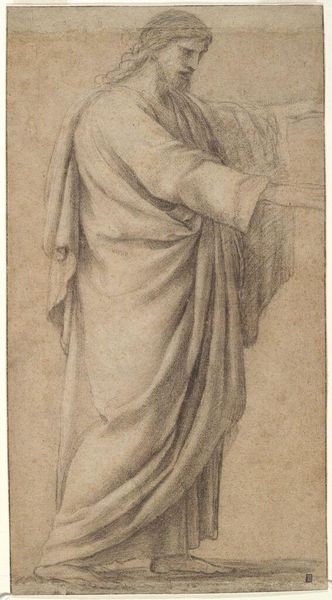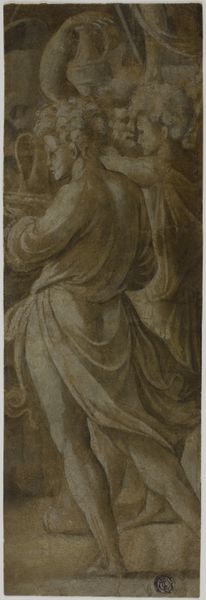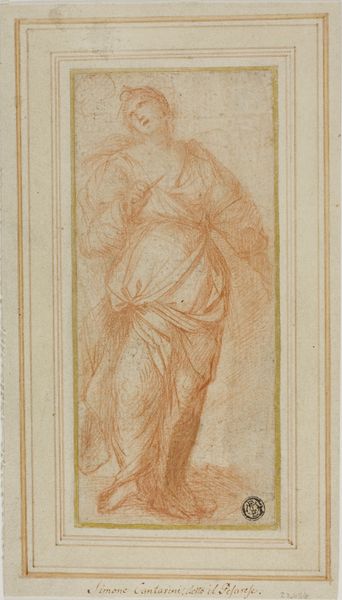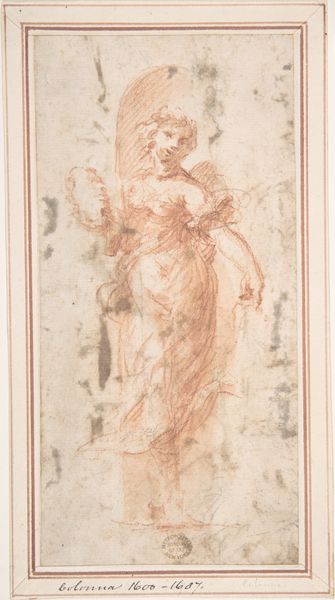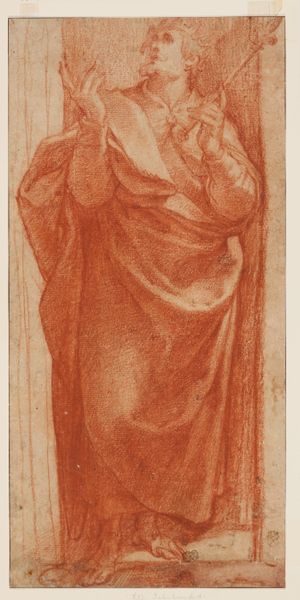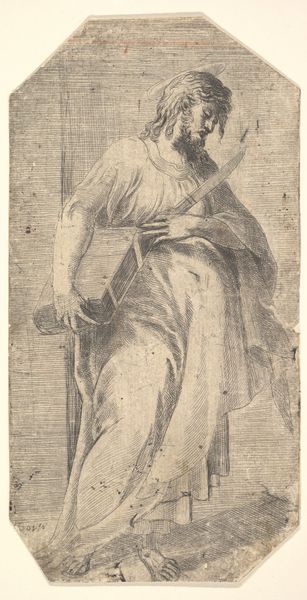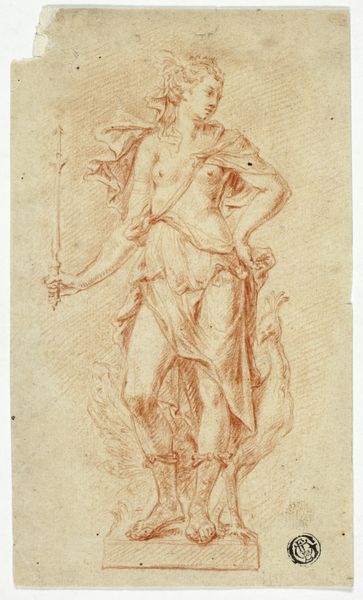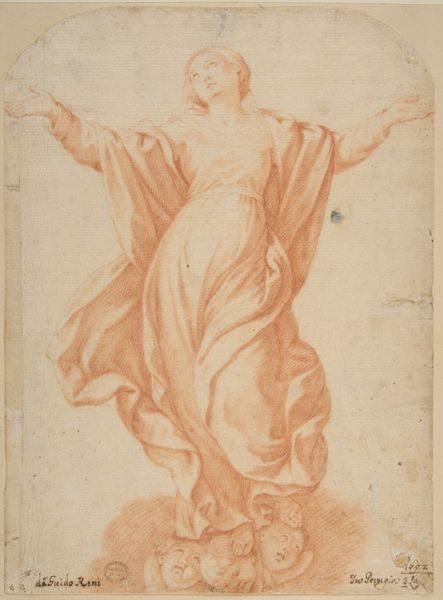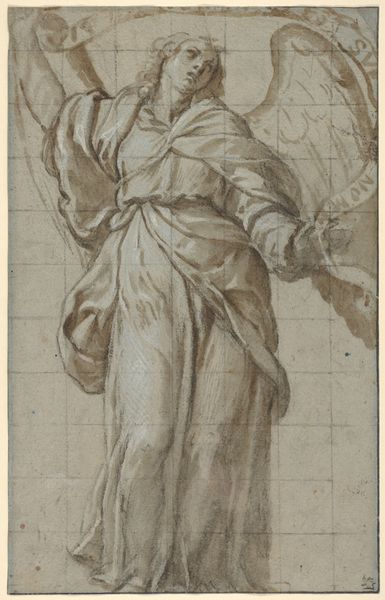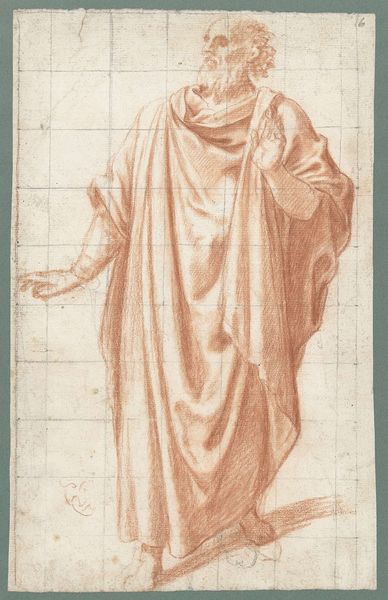
drawing, paper, charcoal
#
drawing
#
charcoal drawing
#
figuration
#
paper
#
11_renaissance
#
pencil drawing
#
charcoal
#
history-painting
#
nude
Dimensions: height 321 mm, width 220 mm
Copyright: Rijks Museum: Open Domain
Curator: Here we have a drawing entitled "Maria ten Hemelopneming," or "The Assumption of Mary," attributed to Jacopino del Conte and dating sometime between 1520 and 1598. It’s a charcoal drawing on paper. Editor: There's a striking sense of upward movement conveyed, even in this monochromatic rendering. The figure almost seems to float off the page. The way the robe swirls gives it a very ethereal quality, doesn’t it? Curator: Absolutely. It’s worth considering the religious context. During the Renaissance, representations of the Virgin Mary were hugely important, particularly those that showed her bodily assumption into heaven. This imagery served as powerful visual propaganda in an age of intense religious conflict. Editor: And, propaganda as part of the establishment too. The figure's idealized form also tells a story about beauty standards. I mean, even ascending to heaven, there's this very defined understanding of feminine representation… What does it tell us when religious devotion is coupled with the aesthetic expectations of the time? Curator: That's a vital point. It shows the interwoven nature of religion, power, and artistic convention. Artists of this era were grappling with classical ideals, humanist philosophies, and deeply ingrained religious beliefs, creating a unique visual language. The drawing, though a sketch, captures the aspirations of the counter-reformation through elevated representations of divinity. Editor: And it brings into question the visual narratives we choose to elevate. Are we promoting the narrative? The beauty standard? Who decides which assumptions are divinely represented and which are just conveniently aligned with power? Curator: It does open a crucial space for questioning. Ultimately, examining artwork like "The Assumption of Mary" reminds us that art isn't made in a vacuum. It actively reflects and shapes the very socio-political landscape it inhabits. Editor: It invites us to challenge the canon, in our interpretation, and in who and what it truly serves.
Comments
No comments
Be the first to comment and join the conversation on the ultimate creative platform.
